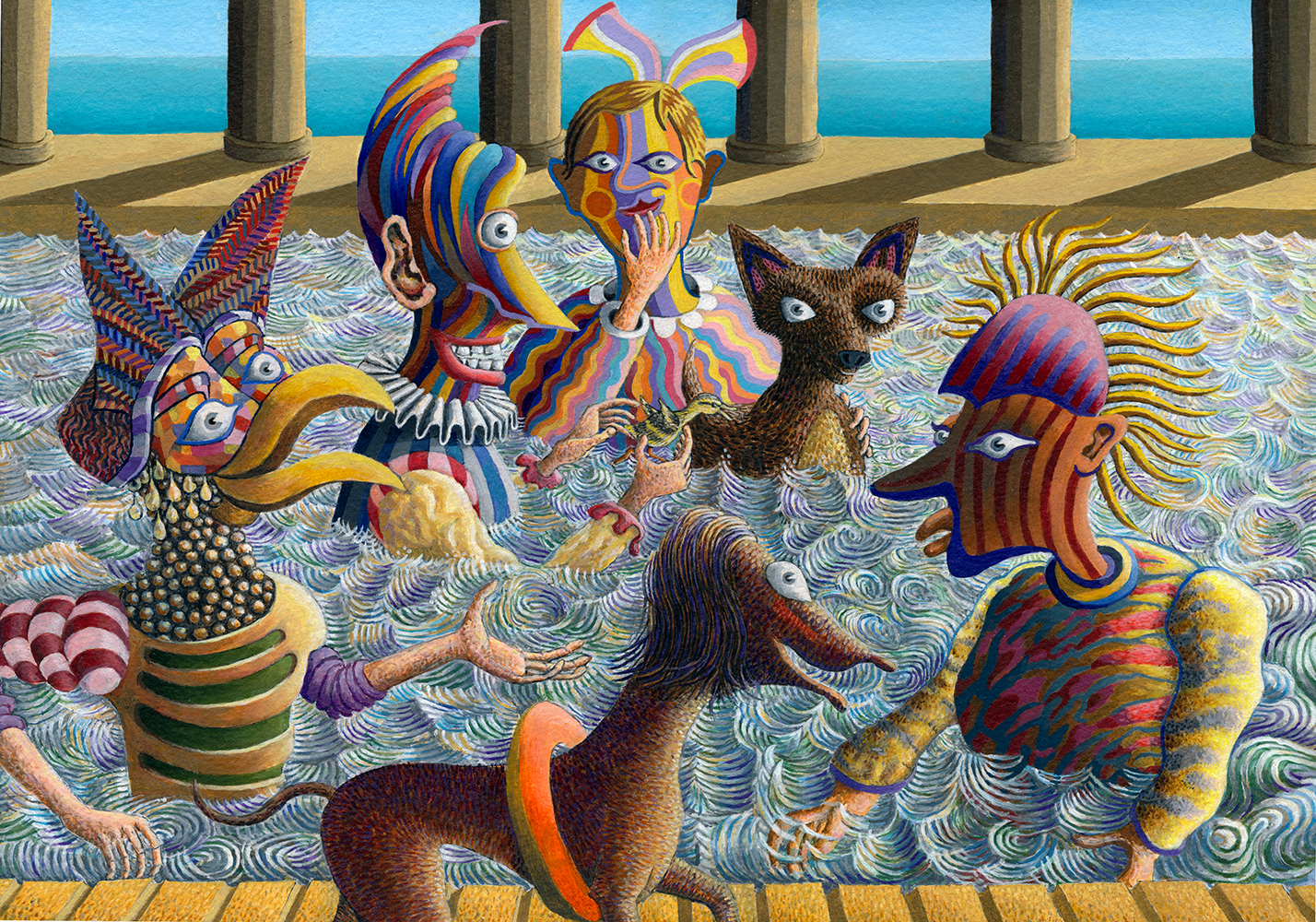

Alan Kestner’s and Rosie Phipps’s paintings are on view at the downstairs patient waiting area in the Nuffield Orthopaedic Centre, Windmill Rd, Oxford OX3 7LD until 8th March. Walk through the main entrance and straight on to the outpatient’s corridor and waiting area at the back. The best times to visit is in the evenings or on Saturday afternoon or all day Sunday when there are few or no patients.

My pictures at the Nuffield Orthopedic Centre are developments from drawings I made in 2021. I scanned the drawings and worked on them using a drawing tablet.


Why do humans act so differently from one another? Some people scam, steal or hurt others whereas others help in disaster areas, give to charity or help their neighbours. No matter what paleontological period, nature always follows a series of patterns. And one of the most important of these is variety.
Unlike a natural ecosystem with the many thousands of different beetles or butterflies, our variation lies deep inside our large brains. My drawings reflect these differences from musicians to fairytale characters to artists to others reverting to the past when we lived in the trees. Could it be that nature has created in our society a complete ecosystem within one single species?
The works here reflect this concept and are a composite of drawings and digital developments. They are printed out on art paper and then stretched over wood and card. If you would like prints or more information, please contact me at ludwigkestner(at)outlook.com.

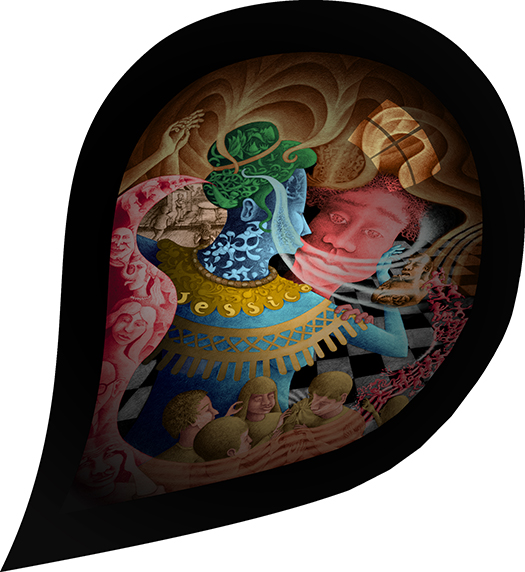
Jessica’s memories stream out of her head in all directions. She remembers with sadness the happy days she spent with her partner (right). She still has many friends (left and below) but the relationships are fleeting and now require more effort to maintain.


Time, here, is time-lapse with multiple copies of each character and movement. An opera singer (Jessye Norman) warms up with a few visible practice notes. Dysfunctional friends (bottom right) argue or display their obsessions to each other. A peaceful man releases a dove symbolizing his desire for peace and harmony amongst all this bustle and strife.

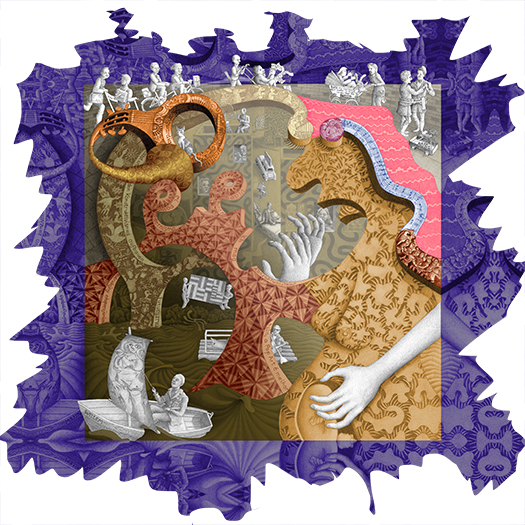
For over one hundred years Marcel Duchamp has dominated avant-garde art and here all his modern-day followers go to worship at a giant urinal in his memory (missing here but can be seen top right in Drawings). As in the Tower of Babel, every artist speaks in the voice of his favourite art movement such as Abstract Expressionism, Conceptualism and so on. To add spice, silly politicians (Nick Clegg and David Cameron; Teresa May and Donald Tusk; Boris Johnson and Dominic Cummings; Donald Trump and Hillary Clinton; Margaret Thatcher and Ronald Reagan) move by the open archways, dressed and acting like the school children they really are.

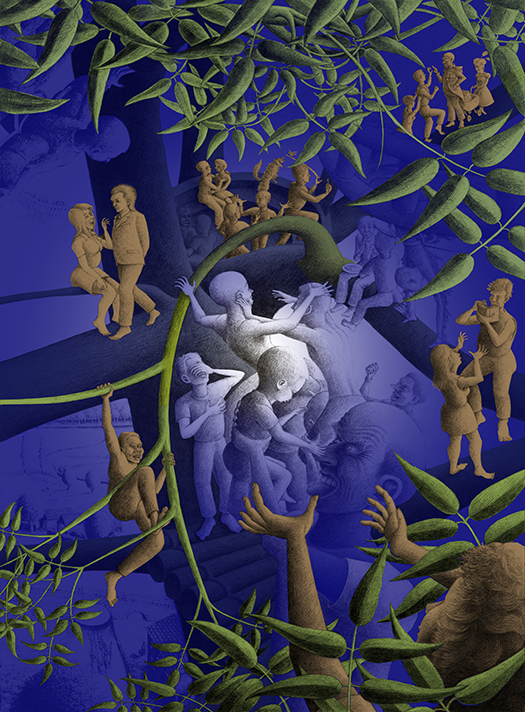
Nature sometimes works backwards and organisms shrink or revert back to earlier forms. Here a group of humans has decided to live in the trees again like our ape ancestors. They may be hoping for a utopian life but human nature always intervenes and sets up conflicts and rivalries.


At the height of Covid the Queen spoke to the nation encouraging us to care for each other and ourselves. I wondered whether she ever got tired of duty and wanted to revert to pastimes of her own? Here she plays a magic harp given to her by an old man on her coronation. Notes stream out in all directions and light up the trees with musical patterns and the leaves with images of her favourite musicians (Yehudi Menuhin; David Oistrakh; Pablo Casals; Segovia; John Williams; Itzhak Perlman; amongst others.

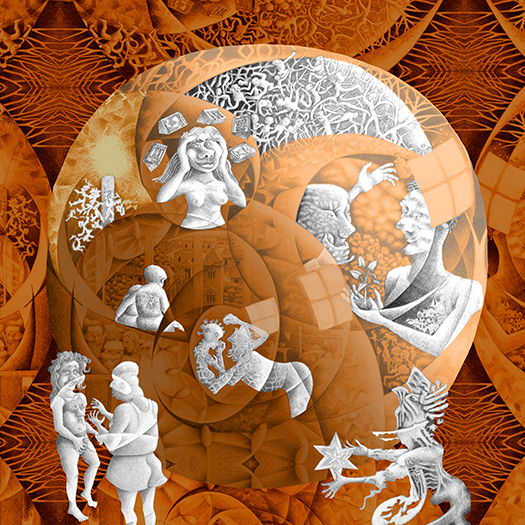
This picture was inspired by my thoughts on the human ecosystem. Ecosystems have trophic levels with apex predators at the top feeding off those below. Here, a modern apex exploiter, Harvey Weinstein, tries to seduce a woman (bottom left), but she is armed with a second personality in her breast and manages to resist him. Further conflict and confusion goes on above with a fighting couple (centre) and medical experts arguing about whether pills or natural herbs are best (right). A budding author (top) can’t decide if she should send her manuscript to Virago Press or whether she should now have equal opportunity wherever else she wants.

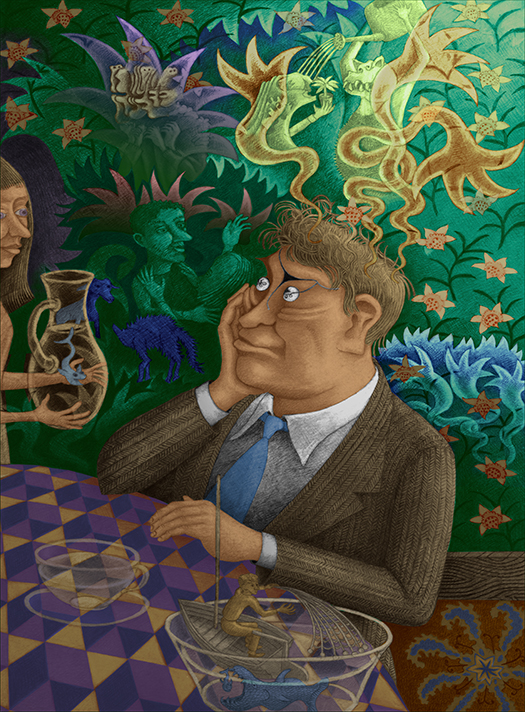
Sometimes, we can remember a few images from our dreams but can’t put them together to make sense. This man’s dreams stream out into the floral wallpaper behind him and turn it into weird scenes of watering cans and odd looking animals. He hasn’t noticed it yet but on the table his bowl of fish soup has become more lively than he anticipated.


The shapes here, in the second of the memories triptych, were inspired by music. The curving forms with their simple star shapes mirror the melody and rhythm of operatic music. The singer Beniamino Gigli (top right) sends his beautiful notes out into the auditorium and down to the violinist and double bass player below. But look carefully – what are the two strange fish doing in the centre of the picture?

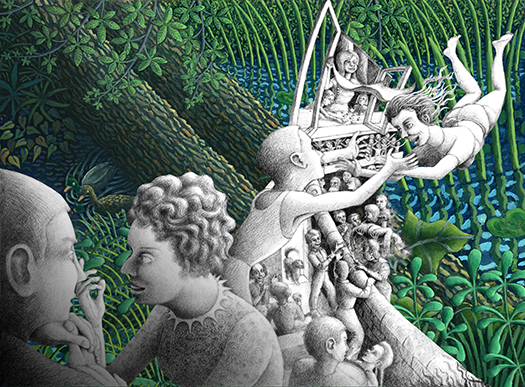
The original drawing for this painting was inspired by Dickens’ Little Dorrit. However, his female characters are often too good to be true and so I have interpreted her as plump and pleasure-seeking. Instead of marrying Clennam, as in the story, she is jumping into the arms of Pancks who is the rent-collecting clerk of Casby.



One’s truth is always mute and is communicated in silence when genuinely expressed. If one has to speak, what results is the translation of that silence into pictures, music, dance and other creative acts – personal, social and institutional.


Every dream is a plan that lends itself to enactment in the outside world; behind every passage in the outside world, there is a dream – or a picture, a note, a movement, a thought, an idea, or perhaps something that is only waiting for discovery. This universality of creativity binds us all in a shared journey of expression and discovery.

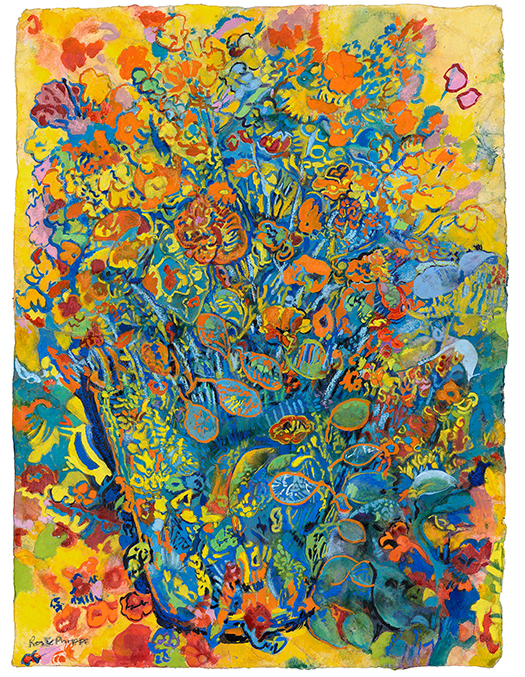
Keats said, That which is creative must create itself. Creativity arises from itself; you can’t learn, explain, or teach it. It comes upon one and creates stillness and a presence where the images and colours take on their own life. One becomes obsessed with it, creating an urgency and demanding satisfaction. One cannot avoid it; it will always need doing.

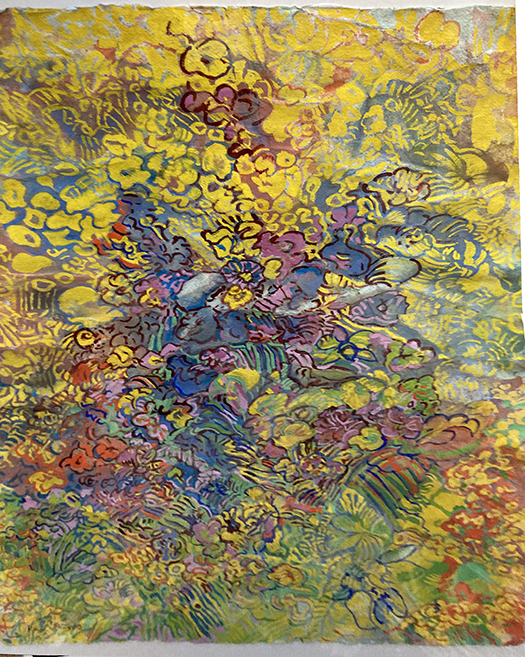
We like to think that every child is filled with creative potential that is extinguished by parental control so that, as adults, we go around feeling that there is a book inside if only we could get it out. Self-expression of personal ideas and emotions does not necessarily go hand in hand with creativity, which goes beyond the individual. The test lies in how relevant it is to the collective mind.

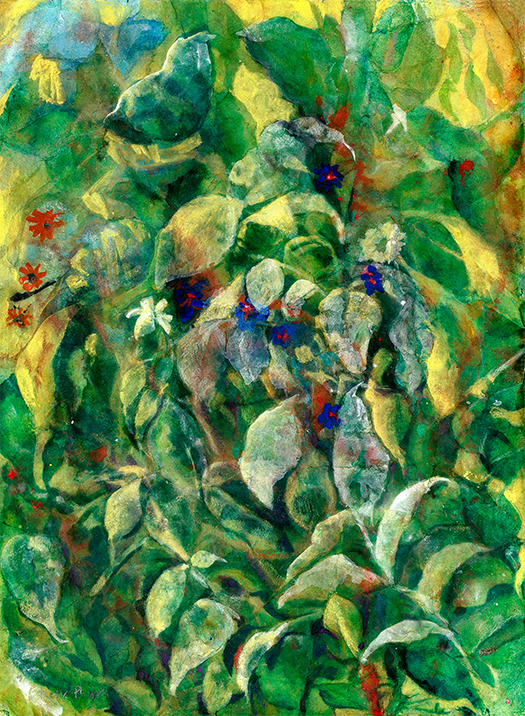
The second mistake is to think that creativity is linked only to art, music, and drama, which ignores the rest of creativity, which manifests in business and technology. Creativity releases itself in many fields of activity. People ask me, Why do you have a business when you can paint? The answer is simple: creating an organisation is a creative act, and each relationship can be creative.


Confusion also equates creativity with production, creating objects that can be judged. Creativity is an end in itself. Just being in it is enough. Instead, like meditation, the presence is enough for me. With painting, I get the added benefit of the image and the colours forming from the silence. Musicians experience the same process as dancers, actors, etc.

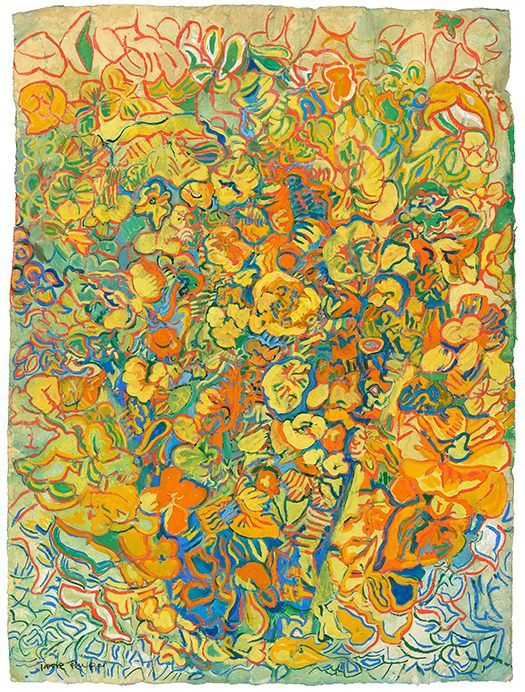
Creativity also needs not to be confused with the word good. All creativity is not good — one only has to think of the atom bomb. The confusion of goodness comes from thinking and believing that everything that God creates is good —therefore, if we make it, then we are mimicking an act of God; consequently, it must be good. Creativity can also be destructive. It can also have a dual face. With painting, one needs to harness both sides: creativity and destruction.

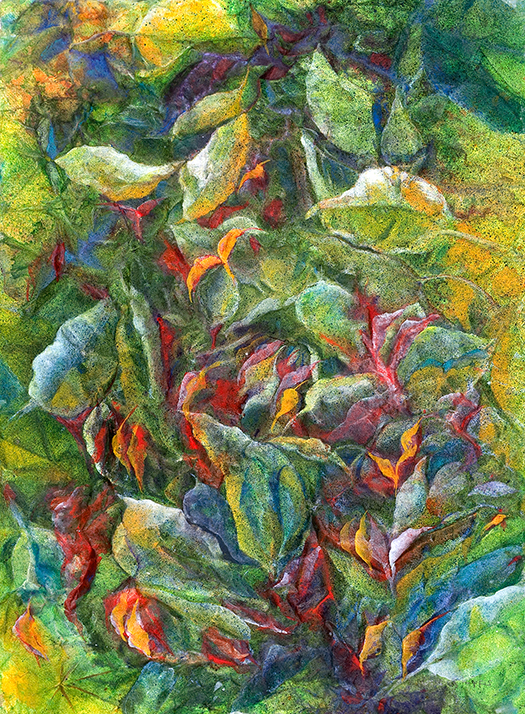
Creativity must have a personal “I ” that does the creating. However, the “I” has to be set aside, or at least not be in the way. At an art group, we were encouraged to walk around with our pictures and say after the experience -“I did that. I painted this.” But this owning comes after the event, part of the communication process that has nothing to do with creativity. It is part of the selling process, which is narrow and oppressive and focuses on the product. Creativity happens unobserved and without judgment. If creativity relied on judgment, it would have to rely on the personal ego- the observer who is judging – and this process would be destructive. Here, the observer and the observation are one. There is unity and no duality. Duality comes after the act; it is not part of the process. The original vision is where one needs to start from.

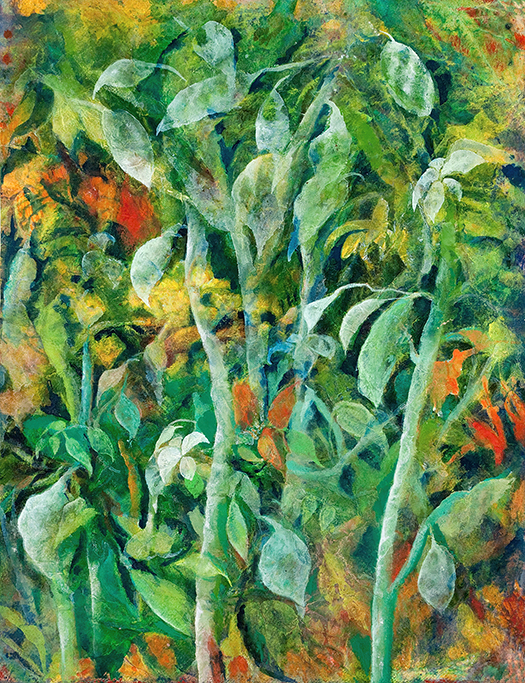
Different artworks also help impregnate other works of creativity. For example, I listen to music, which helps set off a hot spark. I dance—one image, whether music, sculpture, or art, will set off another spark. Creativity builds upon itself and pressures one to move to the subsequent work.

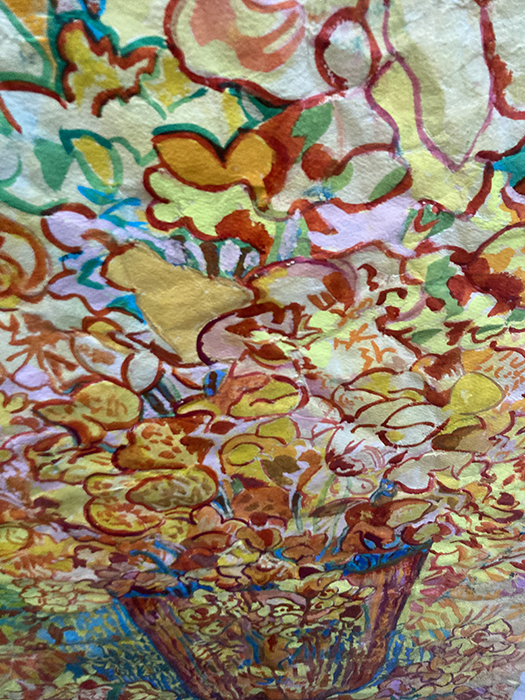
Getting in touch with the imagination and the little people (internal objects) inhabiting it is like dreaming; the images can do as they please. By ‘little people (internal objects) ‘, I refer to the various aspects of our psyche, such as our emotions, memories, and subconscious thoughts and dream images. One has to trust the voices, the images, and the sounds and allow them to come from themselves and not control what you want them to say. It is like a dream. One is always a player in a group, sometimes an observer and at other times taking command. Other people in the group are also of value. So, what comes first in a painting may be a partial image, as one has to allow different images to speak for themselves. This may involve destroying what was created initially to enable creativity to reform and recreate itself. In painting a picture, this process can go on over and over again, so one learns that the act of creation is also one of destruction. The creator and the destroyer work hand in hand. One has to learn to live with that tension.

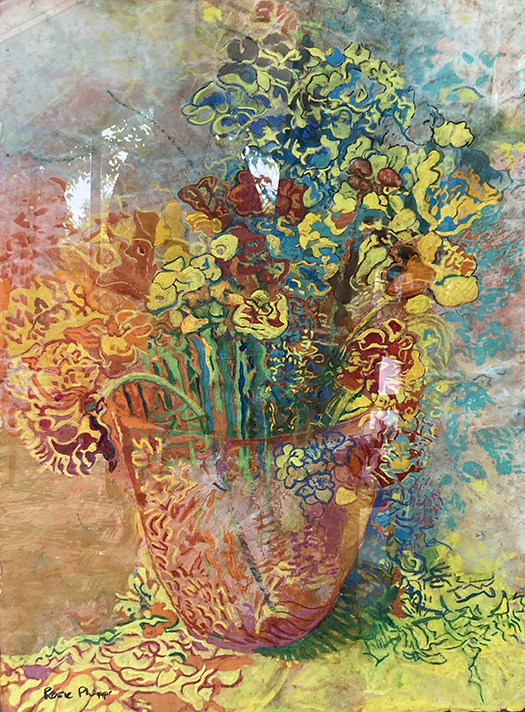
The painting is a mirror that reflects who one is at the moment. The images and colours form the archetypal background to one’s life and the relationship between the conscious and unconscious mind. By ‘archetypal background ‘, I refer to the universal symbols and patterns that are part of the collective unconscious, as proposed by Carl Jung. These archetypes, such as the hero, the mother, and the shadow, provide a framework for understanding and interpreting our experiences. The grid on which one is built enables one to battle questions like chaos and control, black and white, dark and light, creation and destruction, duality and unity – the unification of opposites. These questions flow from out of the paint into being itself, so the work is both a meditation on life and a meditation where painting becomes an extension of the psyche: one’s battle with one’s soul.


My paintings reflect life—childbirth, motherhood, fatherhood, relationships, meditation, nature, sexuality, loving, rebirth, and dying. They also reflect the temporal, spiritual, and archetypal structure of the psyche and the images it provides as we move through life, its seasons, and its celebrations. This transformative power of creativity can empower us to navigate life’s complexities with hope and resilience.
